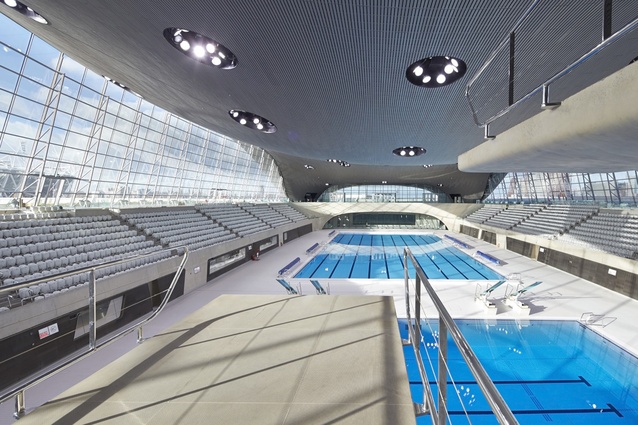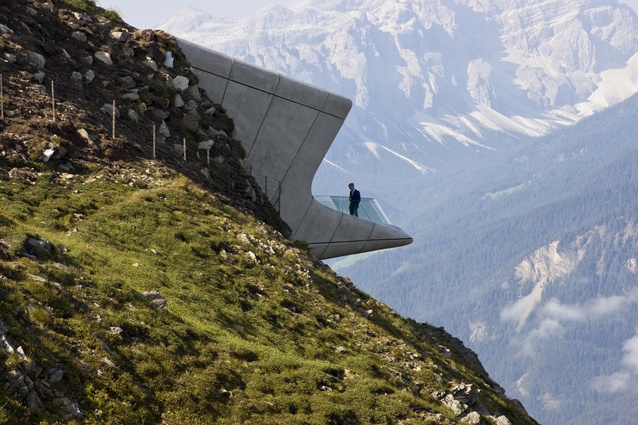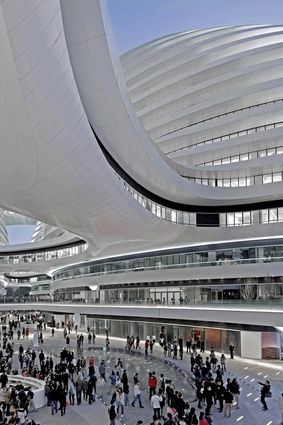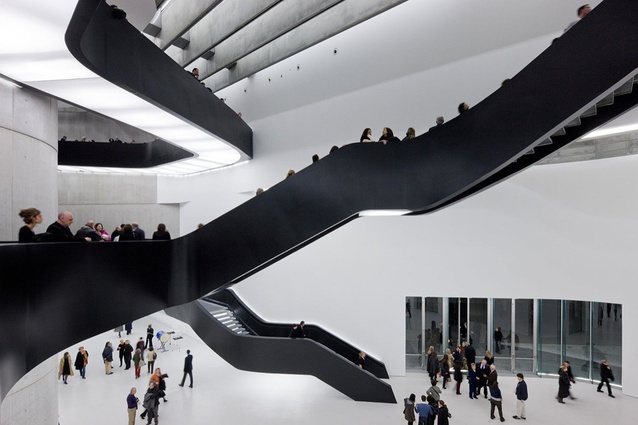Vale Zaha Hadid (1950-2016)
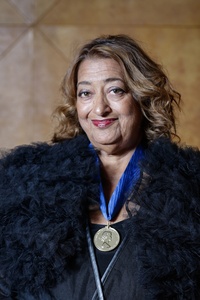
Zaha Hadid Architects have confirmed that Dame Zaha Hadid, DBE died suddenly in Miami in the morning of Thurday 31 March. She suffered a sudden heart attack while being treated in hospital for bronchitis.
Hadid was born in Baghdad in 1950 and studied mathematics at the American University of Beirut before starting her architectural journey in 1972 at the Architectural Association in London.
By 1979 she had established her own practice in London and completed theoretical works such as The Peak in Hong Kong (1983) and the Kurfürstendamm in Berlin (1986).
Zaha Hadid’s first major built commission was the Vitra Fire Station in Weil Am Rhein, Germany in 1993. Her quest for complex, fluid space can be seen in subsequent notable projects including the MAXXI: Italian National Museum of 21st Century Arts in Rome (2009), the London Aquatics Centre for the 2012 Olympic Games (2011) and the Heydar Aliyev Centre in Baku (2013).
In 2004, Zaha Hadid became the first woman to be awarded the Pritzker Architecture Prize. She twice won the UK’s most prestigious architecture award, the RIBA Stirling Prize: in 2010 for the MAXXI Museum in Rome, a building for the staging of 21st century art; and the Evelyn Grace Academy in 2011, which was a unique design, expertly inserted into an extremely tight site.
Zaha Hadid’s other awards included the Republic of France’s Commandeur de l’Ordre des Arts et des Lettres, Japan’s Praemium Imperiale and in 2012, Zaha Hadid was made a Dame Commander of the Order of the British Empire. She was made Honorary Member of the American Academy of Arts and Letters and Fellow of the American Institute of Architecture.
She held various academic roles including the Kenzo Tange Chair at the Graduate School of Design, Harvard University; the Sullivan Chair at the University of Illinois, School of Architecture. Hadid also taught studios at Columbia University, Yale University and the University of Applied Arts in Vienna.
Working closely with office partner Patrik Schumacher, Zaha Hadid’s interest was in the interface between architecture, landscape, and geology; which her practice integrates with the use of innovative technologies that often results in unexpected and dynamic architectural forms.
Widely regarded to be one of the greatest female architects in the world today, she will be sadly missed by the architectural community.

